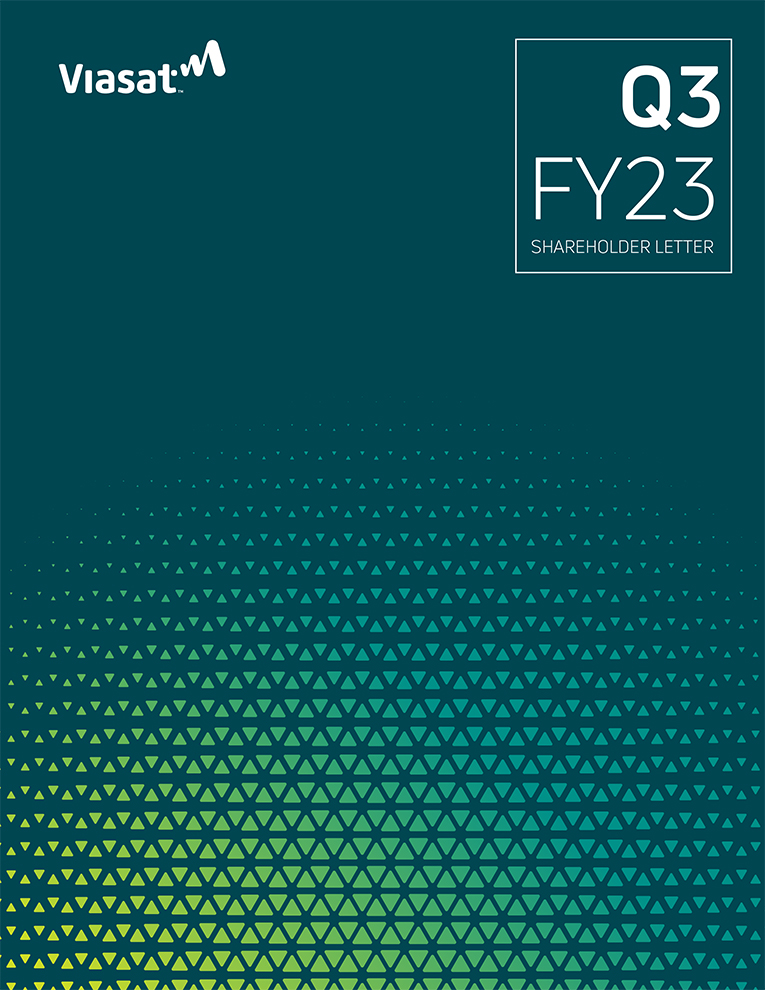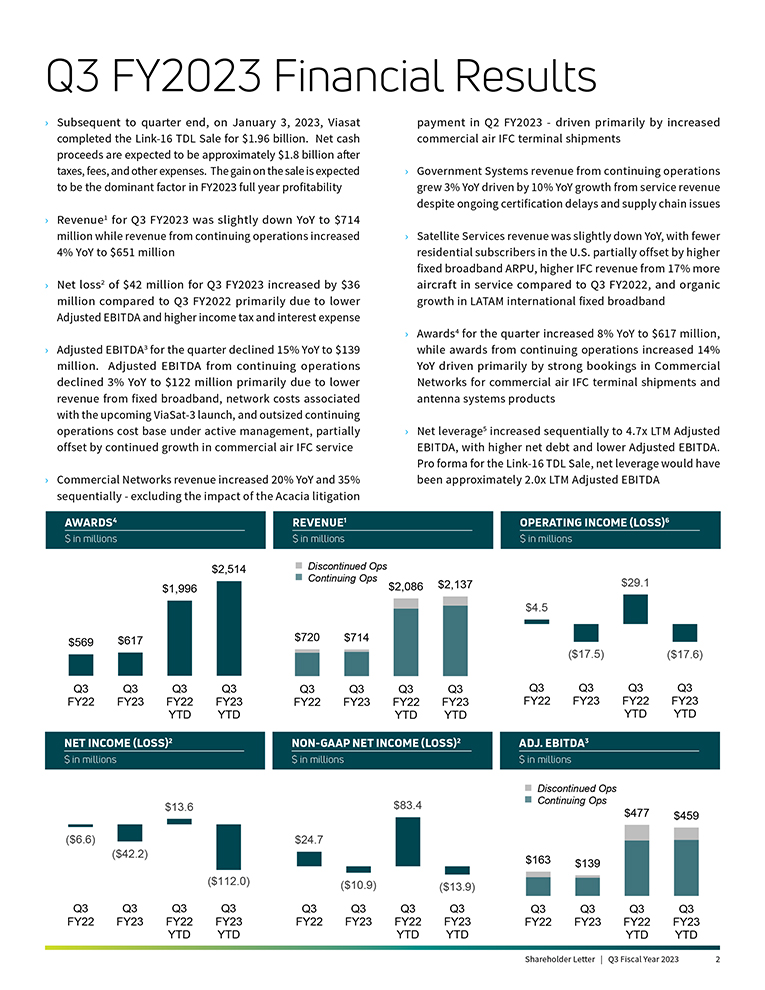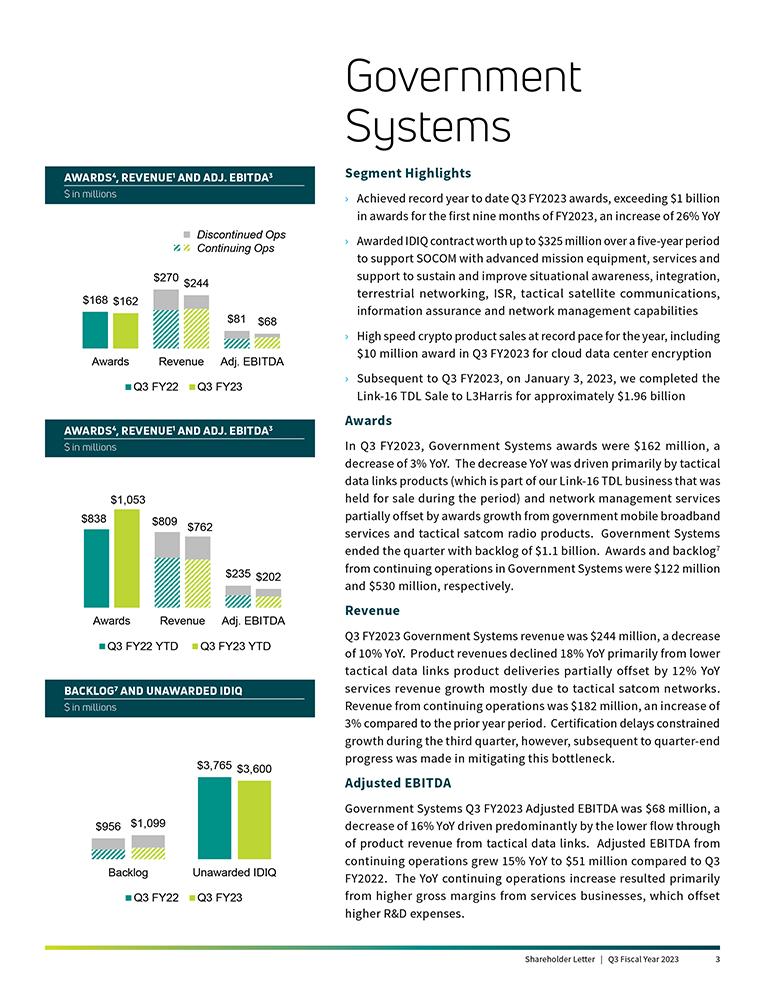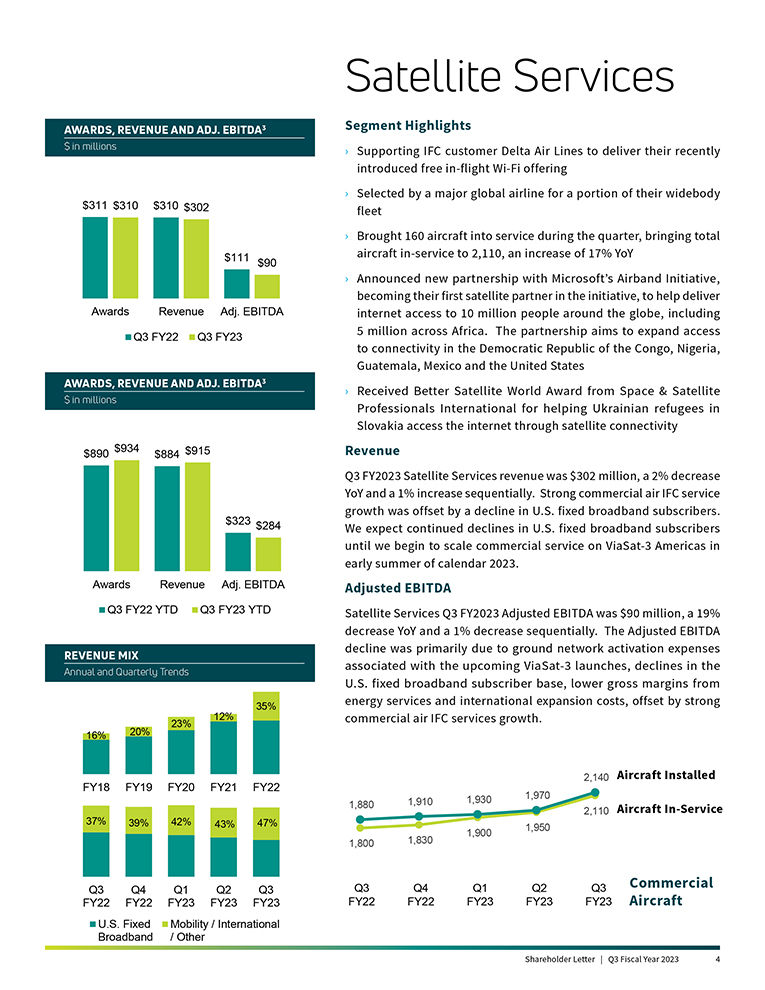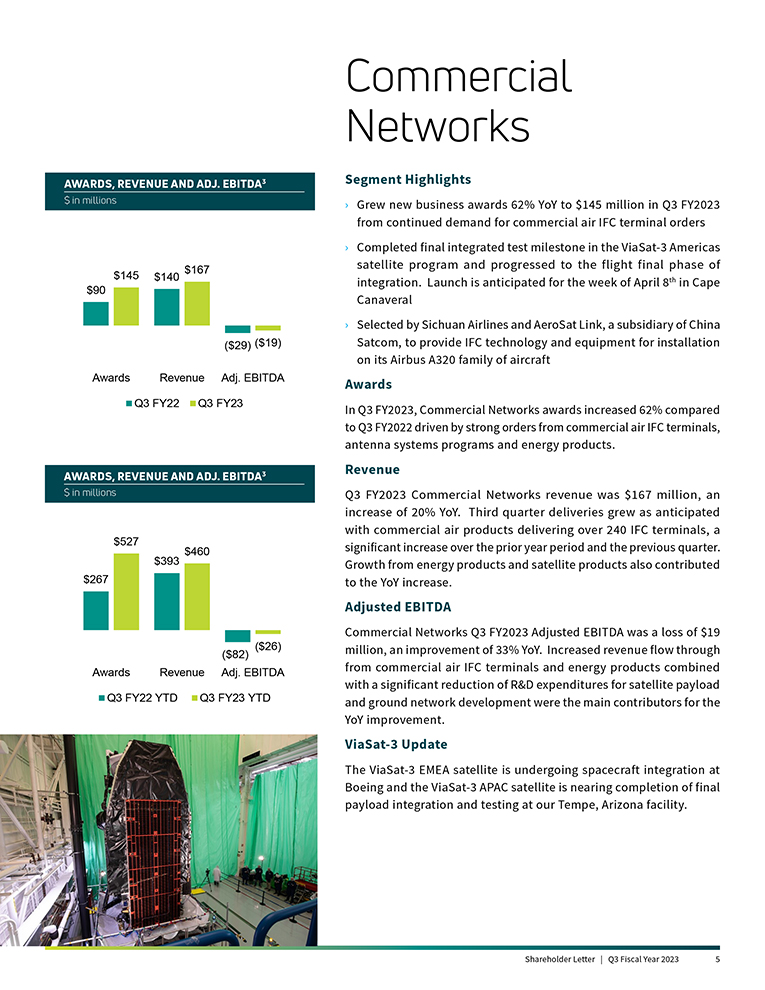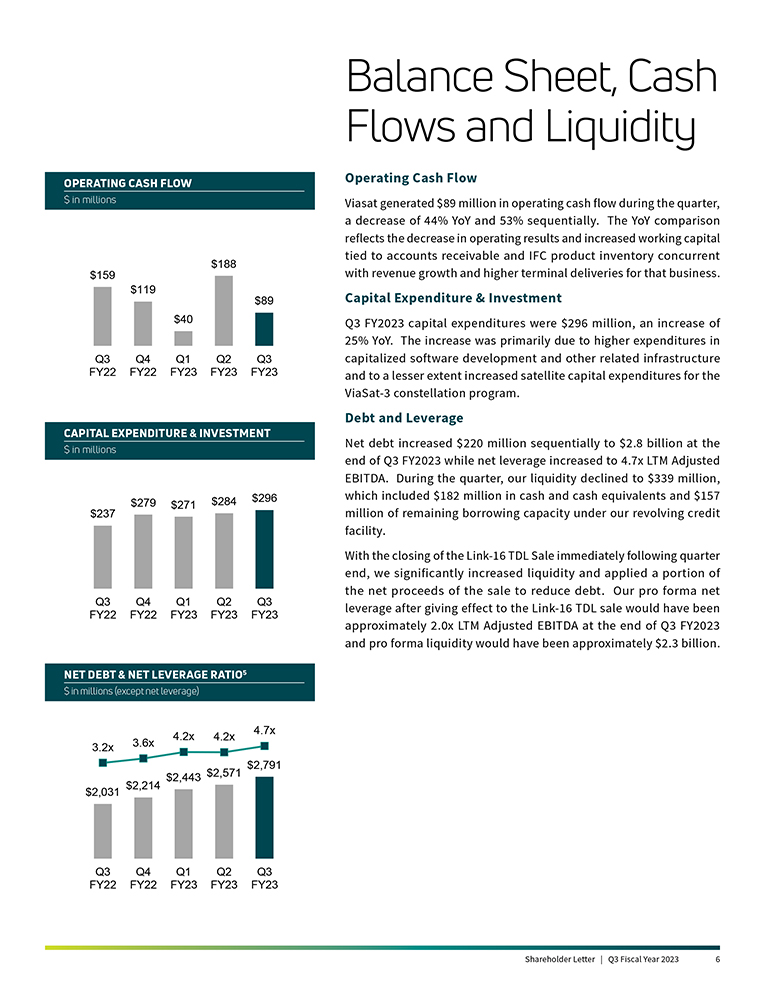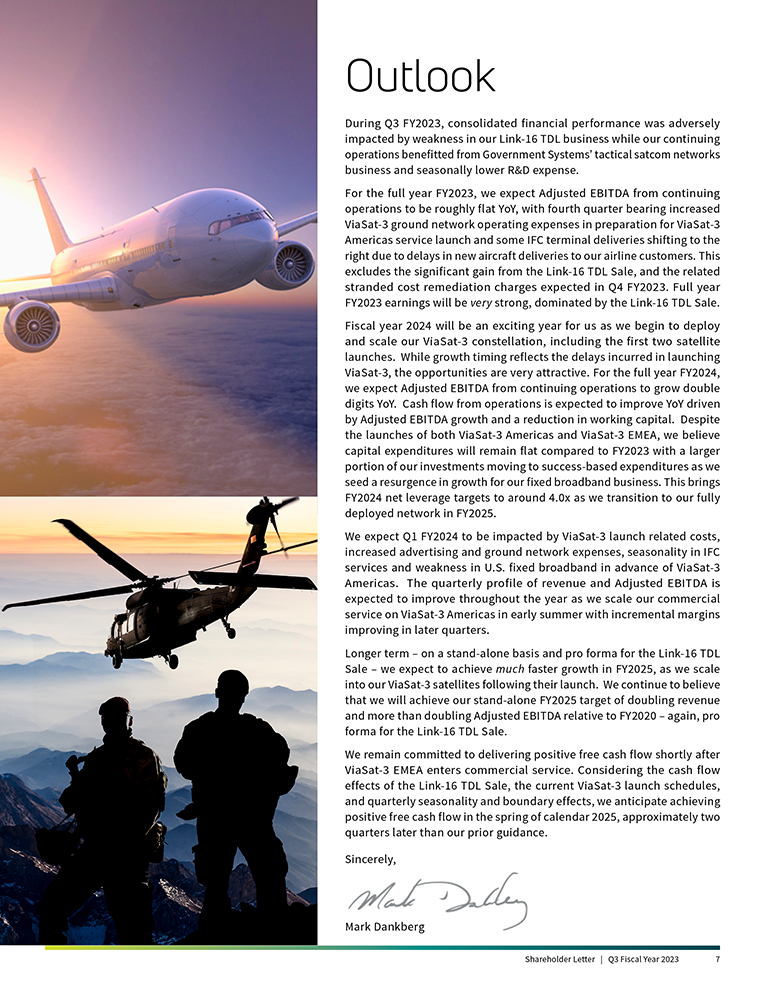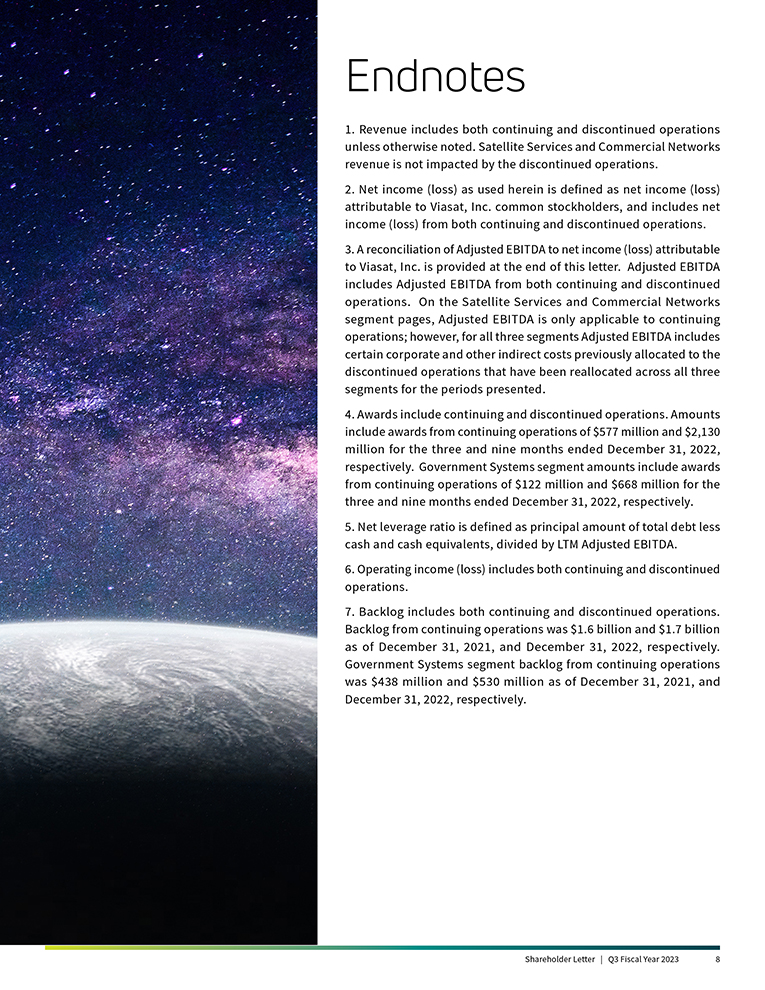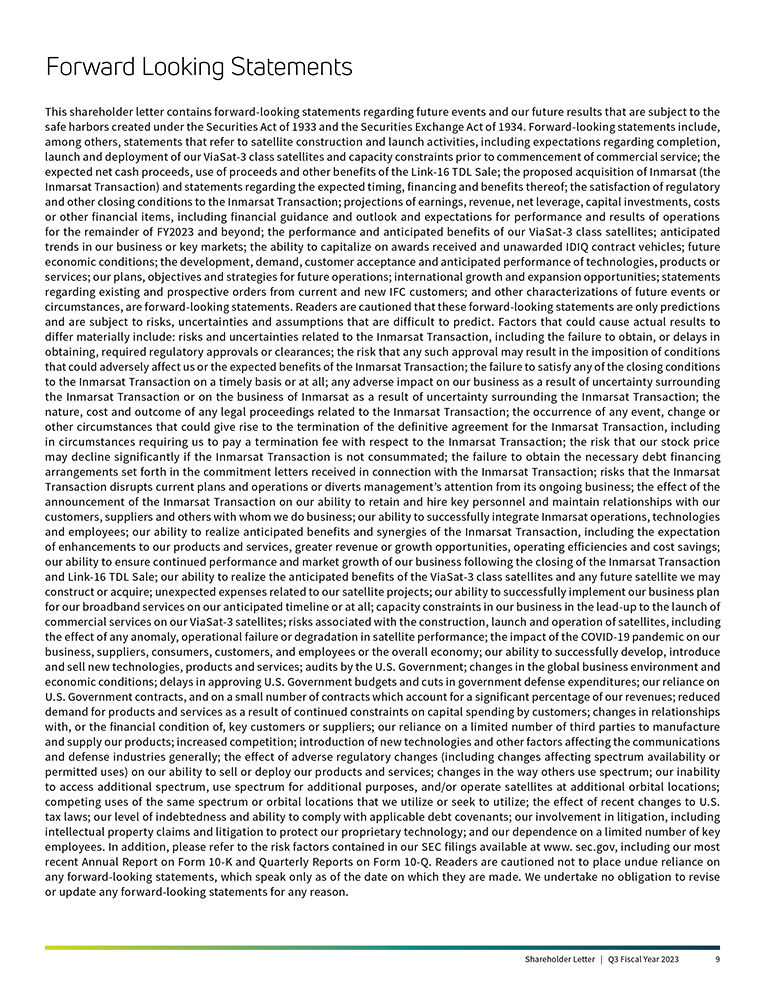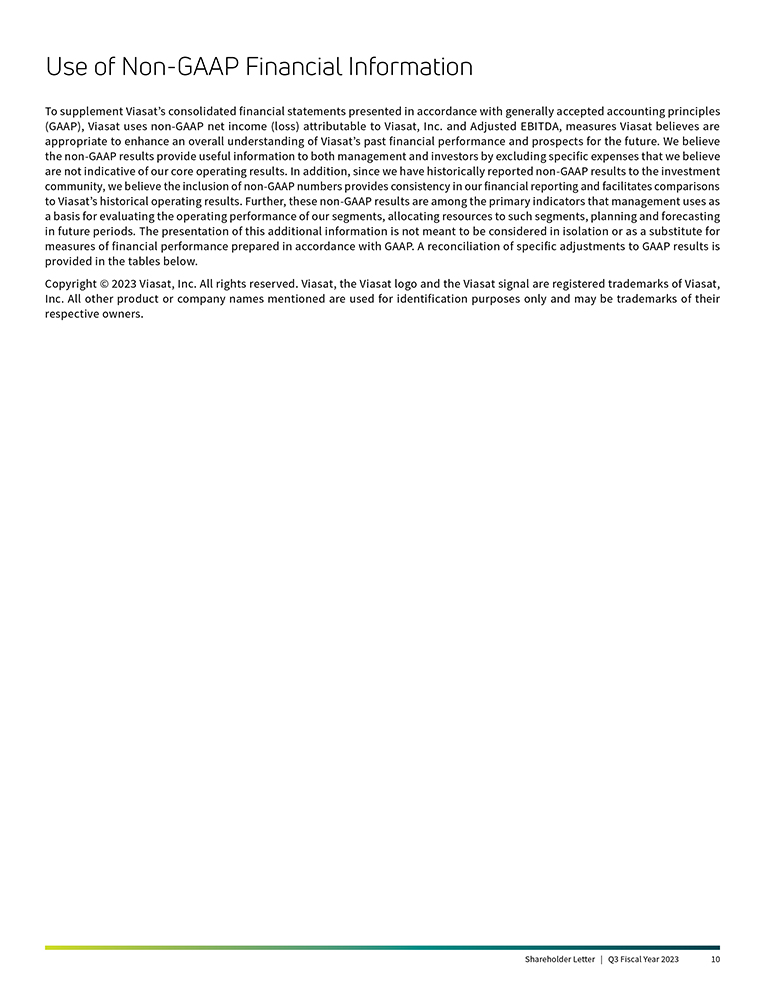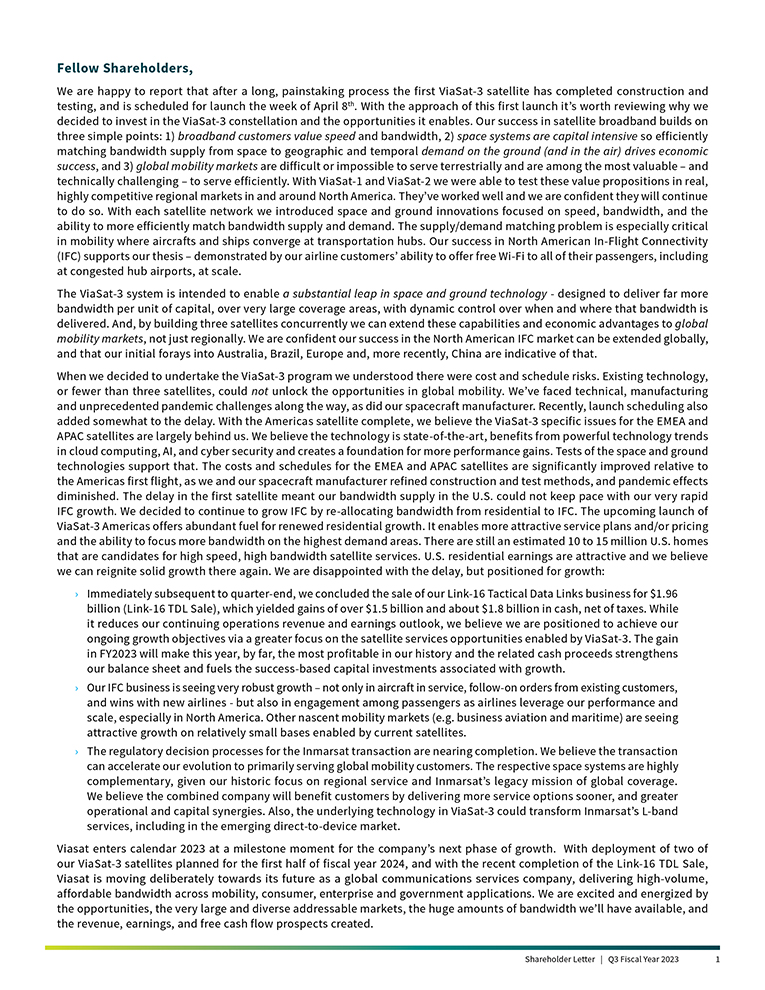
Fellow Shareholders, We are happy to report that after a long, painstaking process the first ViaSat-3 satellite has completed construction and testing, and is scheduled for launch the week of April 8th. With the approach of this first launch it’s worth reviewing why we decided to invest in the ViaSat-3 constellation and the opportunities it enables. Our success in satellite broadband builds on three simple points: 1) broadband customers value speed and bandwidth, 2) space systems are capital intensive so efficiently matching bandwidth supply from space to geographic and temporal demand on the ground (and in the air) drives economic success, and 3) global mobility markets are difficult or impossible to serve terrestrially and are among the most valuable – and technically challenging – to serve efficiently. With ViaSat-1 and ViaSat-2 we were able to test these value propositions in real, highly competitive regional markets in and around North America. They’ve worked well and we are confident they will continue to do so. With each satellite network we introduced space and ground innovations focused on speed, bandwidth, and the ability to more efficiently match bandwidth supply and demand. The supply/demand matching problem is especially critical in mobility where aircrafts and ships converge at transportation hubs. Our success in North American In-Flight Connectivity (IFC) supports our thesis – demonstrated by our airline customers’ ability to offer free Wi-Fi to all of their passengers, including at congested hub airports, at scale. The ViaSat-3 system is intended to enable a substantial leap in space and ground technology—designed to deliver far more bandwidth per unit of capital, over very large coverage areas, with dynamic control over when and where that bandwidth is delivered. And, by building three satellites concurrently we can extend these capabilities and economic advantages to global mobility markets, not just regionally. We are confident our success in the North American IFC market can be extended globally, and that our initial forays into Australia, Brazil, Europe and, more recently, China are indicative of that. When we decided to undertake the ViaSat-3 program we understood there were cost and schedule risks. Existing technology, or fewer than three satellites, could not unlock the opportunities in global mobility. We’ve faced technical, manufacturing and unprecedented pandemic challenges along the way, as did our spacecraft manufacturer. Recently, launch scheduling also added somewhat to the delay. With the Americas satellite complete, we believe the ViaSat-3 specific issues for the EMEA and APAC satellites are largely behind us. We believe the technology is state-of-the-art, benefits from powerful technology trends in cloud computing, AI, and cyber security and creates a foundation for more performance gains. Tests of the space and ground technologies support that. The costs and schedules for the EMEA and APAC satellites are significantly improved relative to the Americas first flight, as we and our spacecraft manufacturer refined construction and test methods, and pandemic effects diminished. The delay in the first satellite meant our bandwidth supply in the U.S. could not keep pace with our very rapid IFC growth. We decided to continue to grow IFC by re-allocating bandwidth from residential to IFC. The upcoming launch of ViaSat-3 Americas offers abundant fuel for renewed residential growth. It enables more attractive service plans and/or pricing and the ability to focus more bandwidth on the highest demand areas. There are still an estimated 10 to 15 million U.S. homes that are candidates for high speed, high bandwidth satellite services. U.S. residential earnings are attractive and we believe we can reignite solid growth there again. We are disappointed with the delay, but positioned for growth: Immediately subsequent to quarter-end, we concluded the sale of our Link-16 Tactical Data Links business for $1.96 billion (Link-16 TDL Sale), which yielded gains of over $1.5 billion and about $1.8 billion in cash, net of taxes. While it reduces our continuing operations revenue and earnings outlook, we believe we are positioned to achieve our ongoing growth objectives via a greater focus on the satellite services opportunities enabled by ViaSat-3. The gain in FY2023 will make this year, by far, the most profitable in our history and the related cash proceeds strengthens our balance sheet and fuels the success-based capital investments associated with growth. Our IFC business is seeing very robust growth – not only in aircraft in service, follow-on orders from existing customers, and wins with new airlines – but also in engagement among passengers as airlines leverage our performance and scale, especially in North America. Other nascent mobility markets (e.g. business aviation and maritime) are seeing attractive growth on relatively small bases enabled by current satellites. The regulatory decision processes for the Inmarsat transaction are nearing completion. We believe the transaction can accelerate our evolution to primarily serving global mobility customers. The respective space systems are highly complementary, given our historic focus on regional service and Inmarsat’s legacy mission of global coverage. We believe the combined company will benefit customers by delivering more service options sooner, and greater operational and capital synergies. Also, the underlying technology in ViaSat-3 could transform Inmarsat’s L-band services, including in the emerging direct-to-device market. Viasat enters calendar 2023 at a milestone moment for the company’s next phase of growth. With deployment of two of our ViaSat-3 satellites planned for the first half of fiscal year 2024, and with the recent completion of the Link-16 TDL Sale, Viasat is moving deliberately towards its future as a global communications services company, delivering high-volume, affordable bandwidth across mobility, consumer, enterprise and government applications. We are excited and energized by the opportunities, the very large and diverse addressable markets, the huge amounts of bandwidth we’ll have available, and the revenue, earnings, and free cash flow prospects created. Shareholder Letter | Q3 Fiscal Year 2023 1
